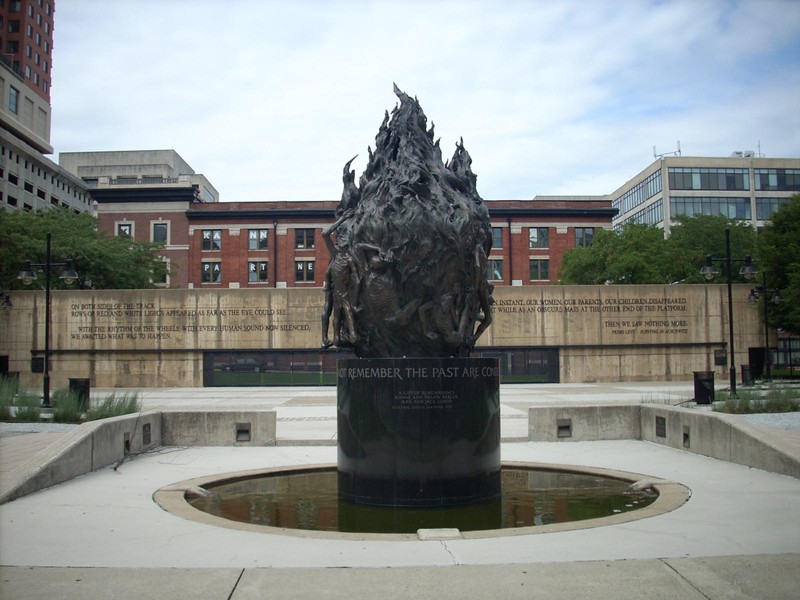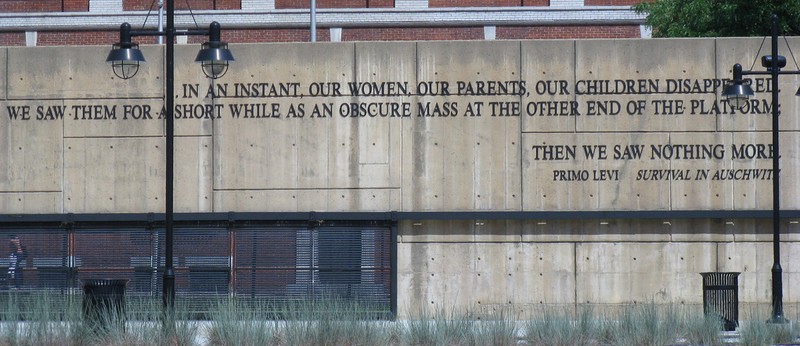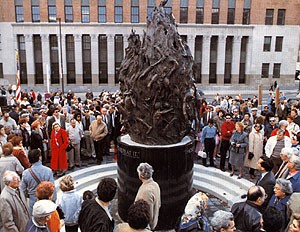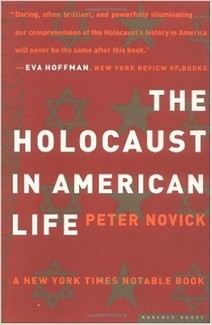Holocaust Memorial
Introduction
Text-to-speech Audio
Images
The Baltimore Holocaust Memorial

Some of the inscriptions in the Holocaust Memorial Park

The dedication of the central statue in 1988

Learn more about the connections between American history and the Holocaust with this book by award winning historian Peter Novick-click the link below to learn more.

Backstory and Context
Text-to-speech Audio
The origins of the Baltimore Holocaust Memorial can be traced back to the 1970s, when a ninth grade Baltimore Hebrew class told the teacher, Alvin Fisher, that they didn’t believe the Holocaust occurred. This moment marked Fisher’s campaign to have a memorial to Holocaust victims constructed in Baltimore. By 1976, the Baltimore Jewish Council took up the project and began raising funds, and by 1980, the memorial was designed at a cost of $300,000. The original memorial was designed by Donald Kann of Kann and Associates and Arthur Valk of Valk Design Associates.
There are three parts of the memorial, including the large grassy mound planted with trees, two 80 x 19 feet cantilevered blocks of bleached, gray-white concrete and a grassy mall behind the blocks. One wall features the memorial’s consecration as well as a list of the 32 camps where the victims of the Holocaust died.
In 1988, the flame sculpture on the memorial was dedicated specifically to Kristallnacht, the Night of Broken Glass. Seven years later in 1995, the memorial had severely deteriorated, and the Jewish Council supported a redesigned memorial.
